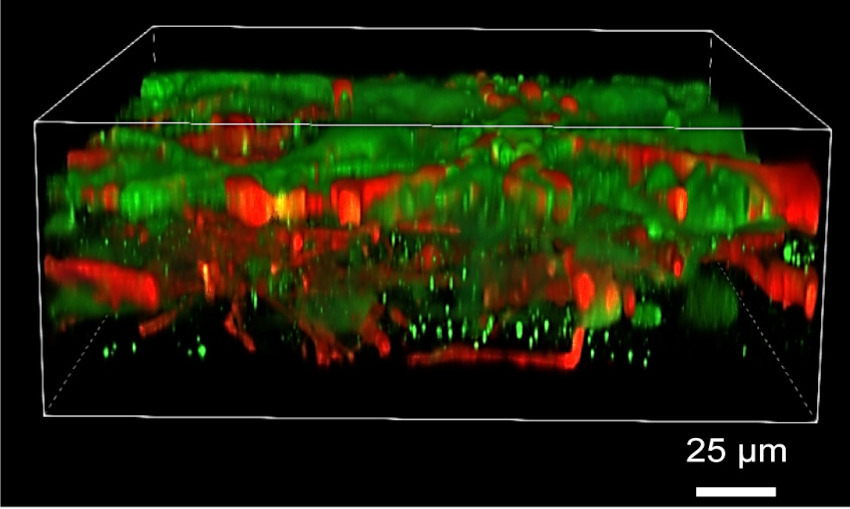
Researchers 3D-print functional human brain tissue
By DE Staff
Additive Manufacturing MedicalUW–Madison scientists’ printed neural tissue to enable better understanding of disorders like Alzheimer’s and Parkinsin’s.

UW–Madisona researcher’s 3D printed neural tissue, with a “green-red” layered pattern, 15 days after printing.
(Image credit: Yan et al./UW-Madison)
University of Wisconsin–Madison scientists announced they have developed a 3D-printing process that allows pluripotent stem cells to grow, connect, communicate and form networks like typical brain tissue. Recently published in the journal Cell Stem Cell, the research opens the possibility to use 3D printed brain tissue to better understand conditions like Down syndrome and Alzheimer’s, test the efficacy of drug candidates or simply better understand how the brain grows.
According to the researchers, Su-Chun Zhang, professor of neuroscience and neurology at UW–Madison’s Waisman Center, and Yuanwei Yan, other previous attempts have had limited success due to the use of traditional 3D printing methods – stacking layers vertically to create a relatively rigid scaffold into which the cells are deposited. While stable, the scaffold limits a neural cell’s ability to migrate, connect to cells in adjoining layers, the researchers said.
Instead, the UW–Madison team printed the pluripotent stem cells horizontally in rows within a pliable bio-ink. This approach, the researchers said, provides sufficient structure while allowing neurons to grow and merge within and between layers. In addition, the thinness of the printed tissue provides ample nutrients from its growth media and makes it easier to study in laboratory conditions.
The process also makes it possible to control the types and arrangement of the neural cells. “Our lab is very special in that we are able to produce pretty much any type of neurons at any time. Then we can piece them together at almost any time and in whatever way we like,” Zhang said in a press release. “Because we can print the tissue by design, we can have a defined system to look at how our human brain network operates. We can look very specifically at how the nerve cells talk to each other under certain conditions because we can print exactly what we want.”
The researchers said their printing technique doesn’t require special bio-printing equipment or culturing methods. In addition, the tissues produced can be studied with standard microscopes, imaging techniques and electrodes.
www.wisc.edu
